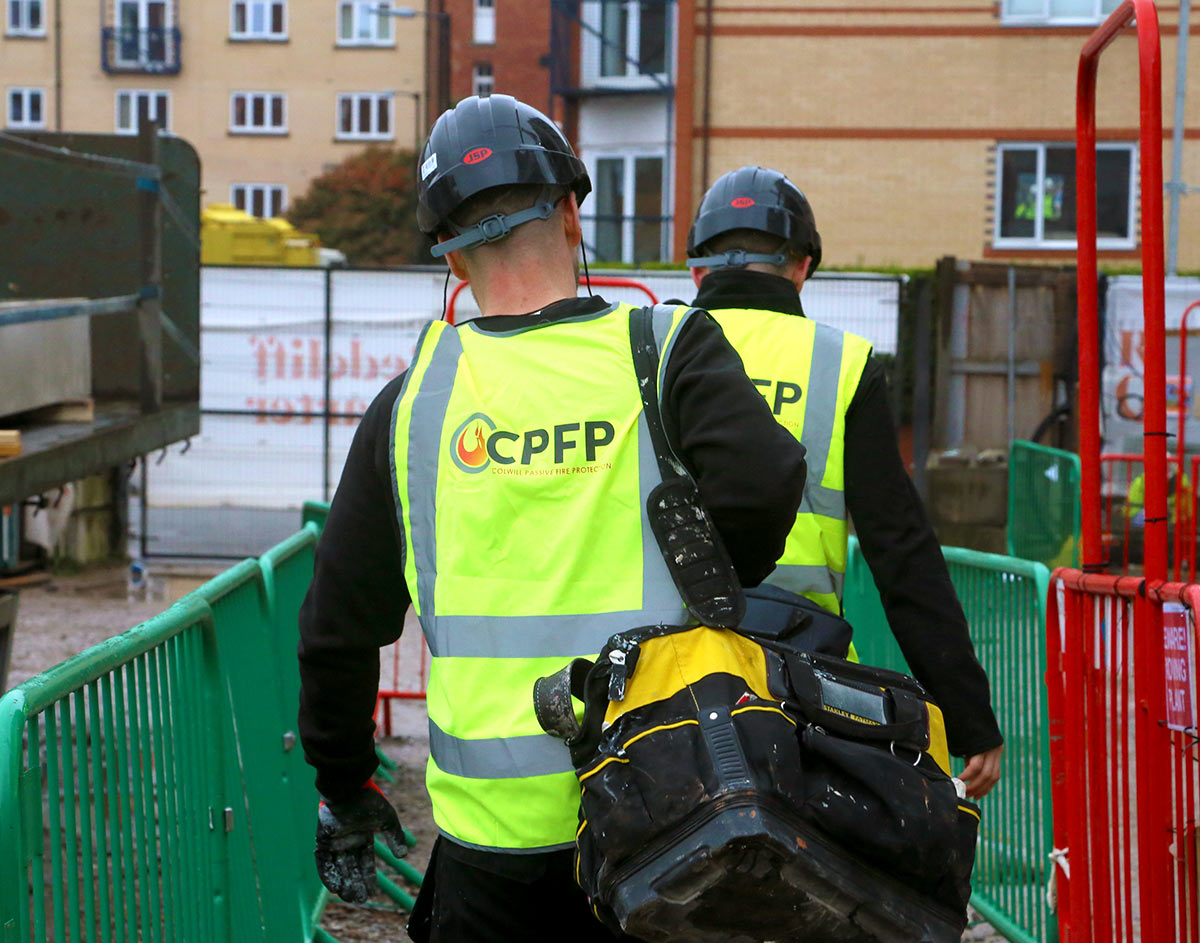Passive Fire Protection – Why is Passive Fire Protection Important?
Passive fire protection is an integral part of a buildings’ fire safety strategy and is important for saving lives and keeping buildings standing.
What is Passive Fire Protection?
Passive fire protection is a fire safety strategy integrated into a buildings’ structure that aims to reduce the spread of fire throughout a building and allow for users to safely escape. An example of passive fire protection methods includes cavity barriers, whereby void spaces within walls, above ceilings and below suspended floors are filled with fire-stopping materials to block routes for smoke and flames.
See more: Cavity Fire Barriers – A Beginner’s Guide to Cavity Fire Barriers
To summarise passive fire protection; the aim is to prevent the spread and possible damaging effects of fire through passive measures built into a buildings’ structure.

Why is Passive Fire Protection Important?
Typically, when considering fire protection, one may imagine fire extinguishers and sprinklers, however, these active fire protection measures work in tandem with the more hidden passive measures to protect people and buildings. The actual prevention of fire spread and compartmenting of buildings can be key in protecting lives and giving emergency services time to react.
Here are some of the main reasons passive fire protection is important.
Saves Lives
Passive fire protection measures help to limit the spread of fire and can therefore save lives. If a fire starts, through passive measures, it should be relatively contained in a compartment, allowing those around to escape the area and leave the building.
When built into the structure, passive fire protection measures ensure there are safe exit routes through making stairwells and key routes protected from spreading flames and smoke. Through designing structural passive fire protection and carefully implementing correct measures in vital places, occupants can safely escape a building in the event of fire.
Limits Fire Spread
Saving lives in the event of a fire is the number one priority, achieved through reducing the spread of the fire and smoke. Passive fire protection measures include cavity barriers, penetration sealing and fire compounding, all with the united aim of limiting fire and smoke spread. Creating building compartments is also a key factor in passive fire protection, whereby secitons are essentially created within buildings to keep fire in one compartment.
However, limiting the spread has other benefits such as reducing building-wide damage and buying time. By keeping the fire within one compartment and reducing its spread, the fire is contained and localised, increasing the relative amount of time occupants have to escape and emergency services have to arrive. Without passive fire protection, buildings can combust incredibly fast and induce devastating effects for building structure and occupants.
Protects Building Structure
Fire, and its extreme heat, can do great damage to buildings and their internal structure. From collapse to creating unstable foundations, fire can cause buildings to become unsafe and endanger lives.
Passive fire protection can maintain building structural integrity and keep critical structural members secure. Not only is this vital for the immediate escape of building users and entry of emergency services without the risk of collapse, but also in the maintenance and renovation of a building after fire.
Legal Regulations
Having effective fire protection measures in a building is required by law on both domestic and non-domestic properties. Although the level of fire resistance and rules depends on the type of building, its use, and when it was built, some level of both active and passive fire protection is required to be compliant with regulations.
An example of fire safety measure regulations for residential buildings is BS 9991 whereby it is required buildings have measures in place to control the spread of flames. Other such regulations exist for all kinds of buildings and demonstrates the importance of passive fire protection in terms of both legal compliance and great advantage to having effective measures in place.
Low-quality and poorly installed fire protection can be ineffective in the event of a fire, as highlighted by high profile cases in previous years. It is critical to get installation done right, and professionally, the first time. Here at CPFP we are skilled and accredited providers of passive fire protection. Check out our services here.
Protects Assets
Valuable assets within a building can be protected from the treat of fire due to passive fire protection. Whether it is valuable stock in a storeroom or the electrics centre, certain assets may require special and specific fire management strategies to reduce risk of explosions or huge financial loss.

Passive Fire Protection with CPFP
If you would like to find out more about passive fire protection, our services or how you can become compliant with regulations, get in touch with CPFP. As trusted and accredited passive fire protection providers with a range of expertise, we can help fulfil all your passive fire protection needs.
Speak to Us Today.
Address: The Old Angel, Flax Bourton, Bristol, BS48 3QQ
Phone: 0117 450 9943
Email: info@cpfp.co.uk
